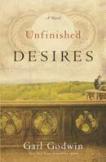Friendship, Rivalry, Redemption
In 2001, 85-year-old Mother Suzanne Ravenel, of the Order of St. Scholastica, begins an oral history of a Catholic girls’ academy in North Carolina, an account that would later be published as Mount St. Gabriel’s Remembered. She jogs her memory with yearbooks and “scrapbooks covering the years from the school’s opening in 1910 to its closing in 1990,” but she is also intimately connected with the place, having started there as a seventh-grade boarder in 1929, taken vows as a postulant in her senior year and become headmistress of the academy at the age of 29.
She expresses gratitude in those reflections; she admires the “holy daring” of the order’s English foundress, and yet she also guiltily worries over the “toxic year” of 1951-52. That is the year that a beautiful, frail Bostonian, Mother Kate Malloy, joins them in the mile-high altitude of their mountain campus. She would be teaching a ninth-grader named Tildy Stratton, who has jettisoned Maud Norton as a friend because of irregularities in Maud’s home life and has accepted into her closest friendship Chloe Starnes, a cousin and new day student now living with her uncle after the sudden death of her mother.
The relationships can be slightly dizzying at first, for as Uncle Henry notes for Chloe, “I hardly see how you can be an outsider [at Mount St. Gabriel’s] when there are so many connections. Mother Ravenel was your Aunt Antonia’s best friend. And Antonia’s niece Tildy Stratton will be your classmate. Antonia and her twin sister, Cornelia, and your mother were all in the class of thirty-four.”
Shifting through time just as memory does, Gail Godwin swiftly develops a host of female characters and two overarching plot lines: one having to do with Antonia and Suzanne discerning a religious vocation with the Order of St. Scholastica when they were seniors, and the other having to do with Headmistress Ravenel’s decision to concentrate Tildy’s flair and energies in directing “The Red Nun,” a play written by Suzy Ravenel when she too was a 14-year-old freshman.
In 1931, “The Red Nun” was a ghostly pageant that depicted the conversion to Catholicism of Elizabeth Wallingford, a sea journey to America with her Irish “fellow adventurer,” Fiona Finney, and Mother Wallingford’s impetuous purchase of a rambling, 80-bedroom Victorian hotel at auction in 1909 in order to create the girl’s school. Suzy Ravenel’s play ended with the poignant legend of a Caroline DuPree, who sadly died of malaria just before she could enter the novitiate. An unfinished statue of the girl in red Italian marble was the focus of an academy grotto.
But the ending of “The Red Nun” would change in the 1951 performance because Cornelia Stratton, Tildy’s mother, resents Mother Ravenel for having been “a pernicious influence” on her twin sister when Antonia and Suzanne were intimates, and she urges her daughter to invent “some sort of breakout from the traditional old party line. Her party line. “
As Mother Ravenel puts it in her oral history, “You could say I offered my play as tinder and threw in the first lit match myself.”
To say more would give away too much. Godwin is the celebrated, bestselling author of 12 earlier, critically acclaimed novels, including The Odd Woman, Father Melancholy’s Daughter and the gorgeous Evenings at Five. She writes with a 19th-century intricacy of plot, the shrewdness and wit of Muriel Spark in The Prime of Miss Jean Brodie and a tender, fetching, Southern voice that may owe something to Margaret Mitchell’s Gone With the Wind. Godwin in fact attended St. Genevieve-of-the-Pines school for girls in Asheville through the ninth grade and in her “Acknowledgements” thanks Mother Kathleen Winters, R.C.E., “for fifty years of friendship and spiritual guidance.”
Not the least of the pleasures in Unfinished Desires is to read it as a fond remembrance of the hectic melodramas of adolescence and an act of indebtedness to the graceful, dedicated, soul-searching nuns who themselves were “works in progress” but oversaw those years with such wisdom and love.
This article also appeared in print, under the headline “Friendship, Rivalry, Redemption,” in the March 1, 2010, issue.








